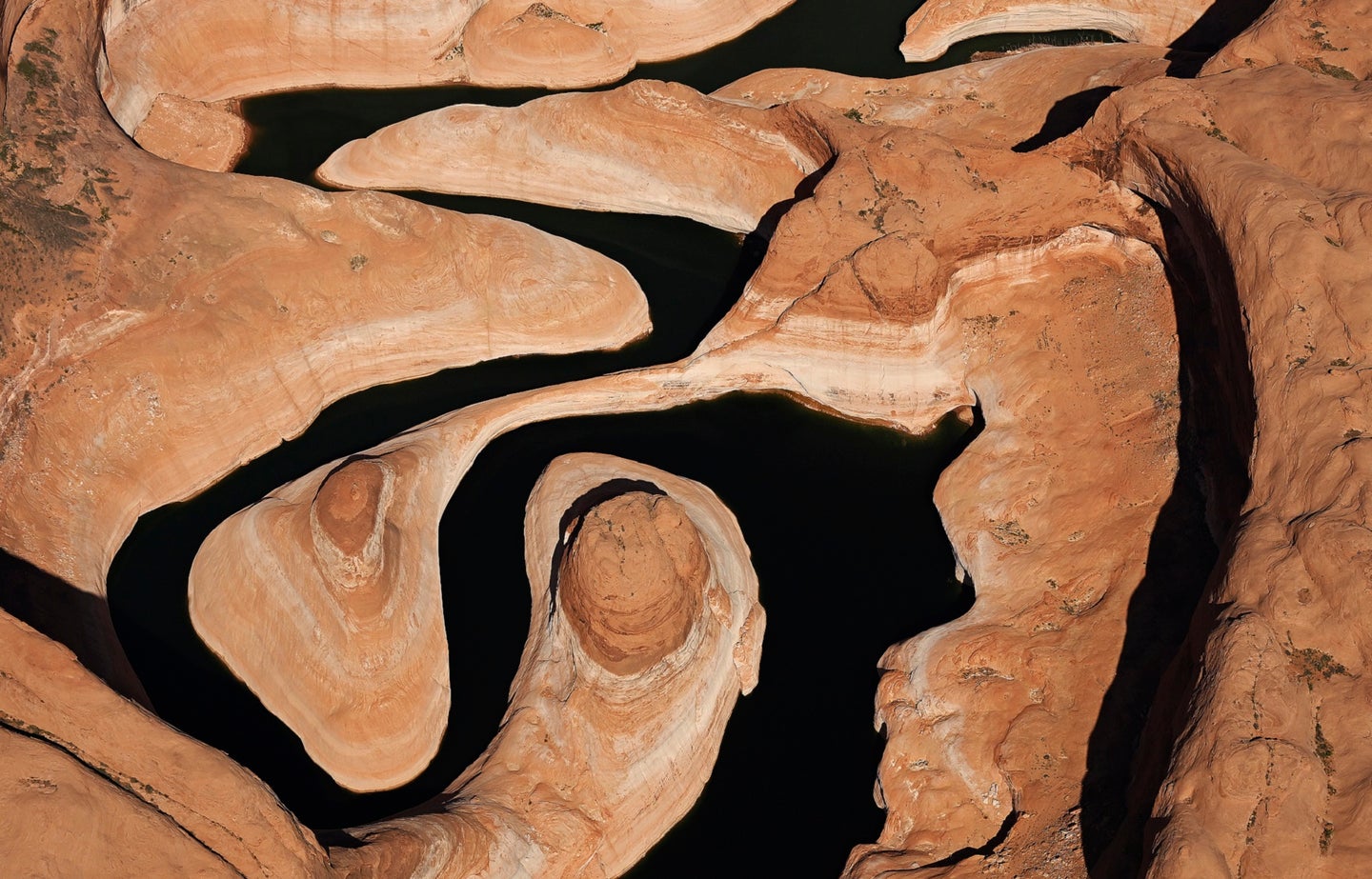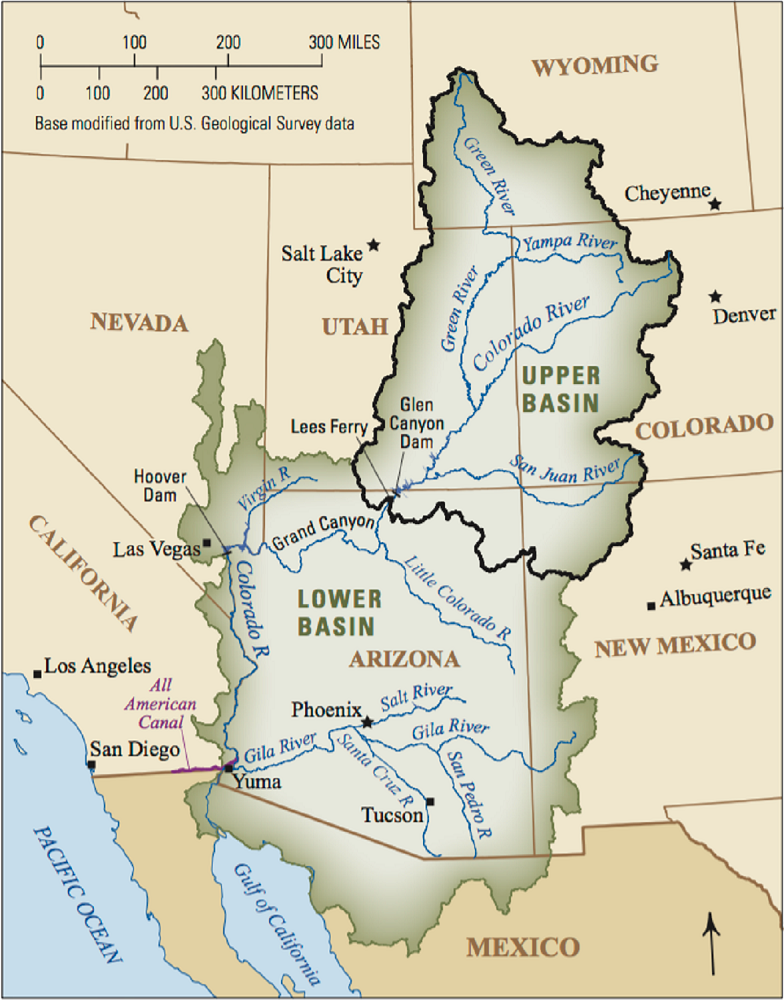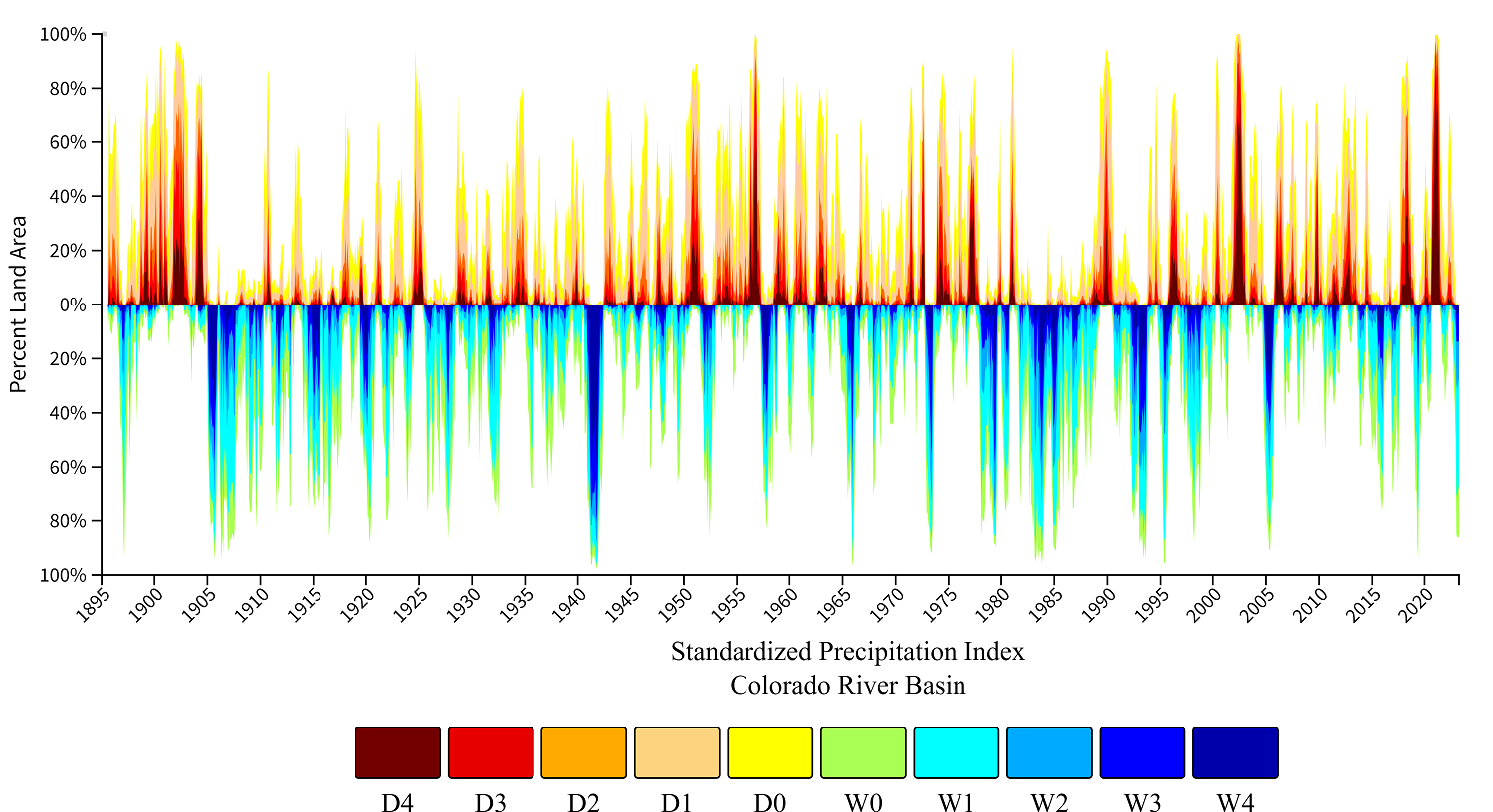
For more than a hundred years, California, Arizona, and Nevada never accounted for evaporation on the lower basin of the Colorado River as they divided its water between themselves and later with Mexico. Their logic held that as long as there was more water than people used, they could ignore small losses from natural processes. More importantly, it was politically fraught—for decades, the lower basin states have been unable to reach an agreement about how evaporation should be taken into account when sharing the river’s waters. Even as a 23-year-long megadrought sucked moisture out of the already arid region, evaporation stayed off the books with decision making.
But now, as water managers scramble to find a solution to a river that’s been overused, mostly for irrigation-heavy crops like livestock feed, they’re forced into a harsh reality: every drop counts, including those that disappear into the air.
In August 2022, the Biden administration ordered California, Arizona, and Nevada to cut their annual allotments from the river by significant amounts. Last month, the White House released a plan outlining two options, which would reduce the states’ use of the river by as much as one quarter: evenly split reductions on the lower basin, which divides the river’s flow from the tip of Arizona down to northern Mexico, between the three states, or make reductions based on senior water rights, which means fewer cuts for California. On May 22, after much politicking, the states proposed an alternative deal that pledges to use 13 percent less water from the river overall. But it’s still unclear if and how the proposed plan accounts for evaporation.

How much water is evaporating from the lower basin of the Colorado River?
One way to measure how much water dries up in the system each year is by looking at the evaporation losses on Lake Mead and Lake Powell, the nation’s two largest reservoirs, located in Nevada and Arizona and Utah and Arizona, respectively. About 1.9 million acre-feet or 13 percent of the water from the reservoirs across the entire river is lost to evaporation each year, says Jack Schmidt, director of the Center for Colorado River Studies at Utah State University.
In particular, the lower basin (which includes Lakes Mead, Mohave, Havasu, and a few smaller mainstream reservoirs) lost an average of 906,000 acre-feet of water per year to evaporation from 2016 to 2020, according to Schmidt, who cites data from the Bureau of Reclamation. To put that number into context, Nevada can legally use about 300,000 acre-feet per year with the existing deal. “The evaporation of water in the lower basin is equal to three Nevadas. Some people would say that’s a big number,” Schmidt says. Other estimates put the amount of water lost to evaporation even higher at about 1.5 million acre-feet per year, or about five Nevadas.
But the overall amount of water that evaporates hasn’t actually changed that much in the past decade. That’s because there’s just less water in the reservoirs, which means there’s less water to lose,” according to Katherine Earp, a hydrologist for the Nevada Water Science Center. At the same time, she adds, as the reservoirs become shallower, the water becomes warmer, and evaporation increases slightly.
[Related: See inside Glen Canyon Dam as Lake Powell levels drop]
Evaporation occurs when energy, usually in the form of heat, turns a liquid into gas. In this case, sunlight heats up water from the reservoirs and transforms it into water vapor. While the process seems straightforward, many factors affect how much evaporation occurs on the reservoirs. “It’s the sun; it’s dry winds sweeping across the reservoirs; it’s whether or not it’s cloudy,” Schmidt says. “It’s all about the heat and the relative humidity of the air over the reservoir.” A warming climate can accelerate those drivers as well, he says.
Earp cautions that scientists don’t know how much climate change and evaporation will cut into water held in the lower basin. She says there are two factors that could see direct impacts: the reservoirs’ temperature and depth. “Those are changing as the [lakes along the Colorado River] are changing,” she says. “Most of the evaporation is being done right at the surface with the wind. So that’s not changing. We’ve always had a big hot desert—we will continue to have a big hot desert.”

What can states in the Colorado River deal do to fight evaporation?
Even if the states took immediate action to prevent evaporation on the Colorado River, it wouldn’t be simple. The reservoirs are too big for quick fixes. “People put covers on their swimming pools and hot tubs,” Schmidt says. “You’re not going to do any of that on Lake Powell and Lake Mead—these are reservoirs are more than 100 miles long.” Instead, he outlines two potential solutions: consolidating water from the two major reservoirs into one or pumping some of the water underground.
Schmidt did the math behind the first option. In a white paper published in 2016, he examined how much water might be saved if the lower basin states fill Lake Mead and put any remaining water into Lake Powell. “Right now we manage the system to equalize the storage contents in Lake Mead and Lake Powell, and so we sort of maximize the surface area exposed to the sun,” he says. But he found the savings would be minimal, about 50,000 acre-feet of water across the two reservoirs, and says it should be used as a second-tier strategy.
[Related: Solar panels and water canals could form a real power couple in California]
In the second option, water from the reservoirs would slowly be cached underground. Arizona and California already store some water underground in recharge basins with the intention to put water back into local aquifers. But there’s a risk of not being able to track and recover all of the water that seeps back into the ground. Still, Schmidt says recharge basins might be a good option if evaporation gets worse. “It’s a technique trusted by water managers,” Schmidt says. “Yes, it’s uncertain. But those uncertainties do not concern people enough that they don’t do it.”
Earp says the subterranean-storage strategy might be difficult in southern Nevada, where the geology can’t store such large volumes of water. “When users can’t use all the water, they do store excess in smaller orders in Arizona and Las Vegas. But doing the whole lake is a much bigger scale thing,” she says. “I don’t know if it would work.”
Both Earp and Schmidt agree that evaporation will keep playing a role in negotiations over the lower basin. “The most fundamental attribute of the river is it’s fully tapped out,” Schmidt says. “When the natural flow of the river system declines, and you begin to account for everything (because you must), then evaporation is a significant process. And somebody’s got to account for it.”
The post Every drop of the Colorado River counts. So what about evaporation? appeared first on Popular Science.
Articles may contain affiliate links which enable us to share in the revenue of any purchases made.
from | Popular Science https://ift.tt/voLBW38




0 Comments